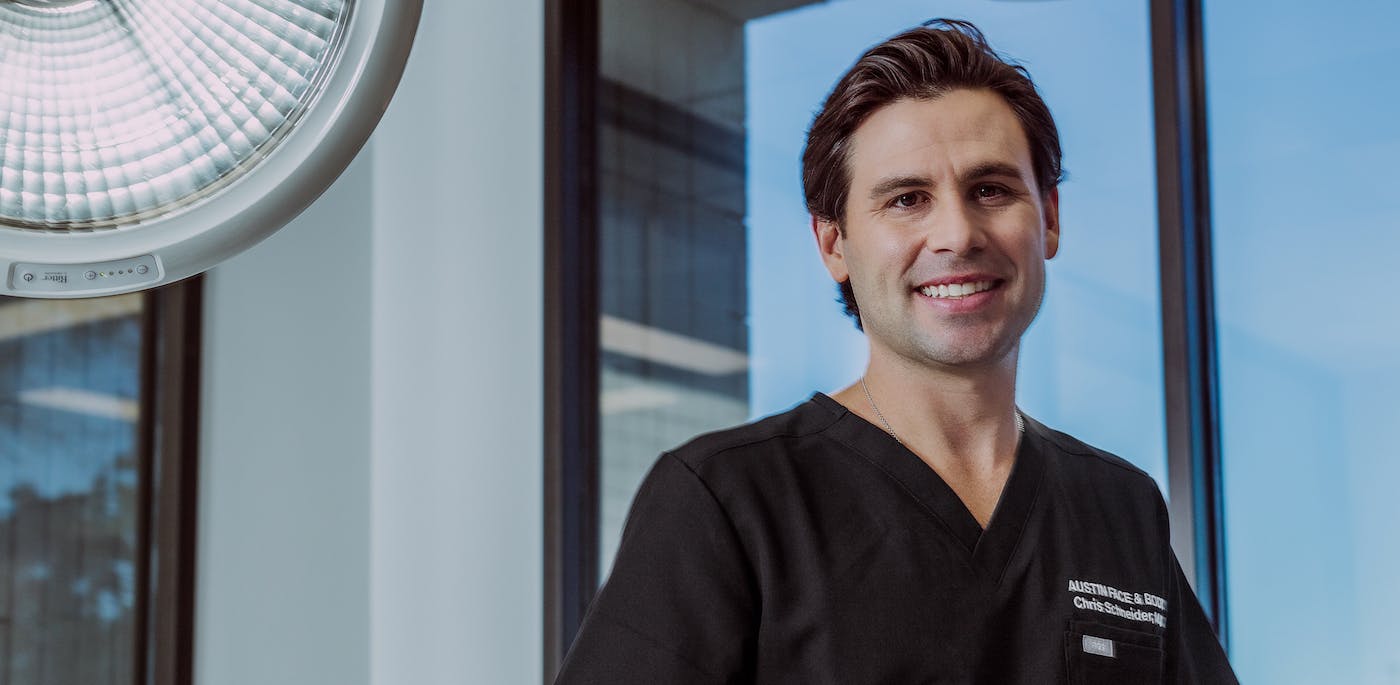Dr. Chris Schneider is a plastic and reconstructive surgeon, who also specializes in microsurgery. He is a native Texan who is proud to return home to the Lone Star State after nearly a decade of intense surgical training.
The procedure:
What to expect
Microvascular breast reconstruction is performed under general anesthesia. It is a more extensive procedure than implant replacement. As such, it may require larger incisions and a longer recovery period.
There are a number of techniques available, depending on which flap you and your surgeon decide to use for the procedure. During your private consultation, we will help you determine which one is right for you:
- TRAM flap. During this procedure, one of our surgeons will remove tissue and muscle from your abdomen. This flap will be transferred to the chest to restore your breast shape.
- DIEP flap. This is similar to the TRAM flap, but only skin and fat are removed from the abdomen. Once relocated to the chest area, the surgeon will reattach blood vessels.
- SIEA flap. This is a variation of the DIEP flap that is slightly less invasive. Your surgeon will use the same tissue from the DIEP flap, but different blood vessels that aren’t as deep.
- Back. The latissimus dorsi flap involves taking skin, fat and muscle from your upper back. It requires less tissue when compared to a TRAM flap approach, so it can be ideal for women who want to restore small to medium-sized breasts.
- Buttocks. The gluteal flap extracts tissue from the buttocks. It’s ideal for women who don’t have enough extra tissue elsewhere on the body.
- Inner thigh. The transverse upper gracilis (TUG) flap is a newer variation on microvascular breast reconstruction. It takes tissue and muscle from the inner thigh and bottom of the buttocks.




